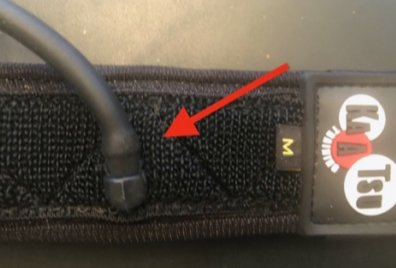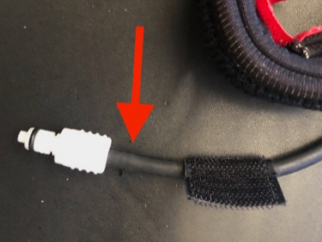For what? Strength, stamina, functional movement, mobility, recovery, KAATSU Aqua

 Experienced KAATSU Master Specialists and coaches from California (Dave Carlson) to Massachusetts (Chris Morgan) have long incorporated KAATSU Aqua in the training of their athletes for speed, strength and stamina. They also use KAATSU and KAATSU Aqua for rehabilitation of muscles, bones, ligaments and tendons when required. It is used often for recovery, especially after intense workouts and in post-competition situations.
Experienced KAATSU Master Specialists and coaches from California (Dave Carlson) to Massachusetts (Chris Morgan) have long incorporated KAATSU Aqua in the training of their athletes for speed, strength and stamina. They also use KAATSU and KAATSU Aqua for rehabilitation of muscles, bones, ligaments and tendons when required. It is used often for recovery, especially after intense workouts and in post-competition situations.Like KAATSU, KAATSU Aqua is the original BFR for use by aquatherapists, trainers and physical therapists with aquatherapy pools, and competitive aquatic athletes and older people who do aquarobics and aquawalking in shallow pools.
Standard protocols for KAATSU Aqua is the same as KAATSU regarding the Base SKU Pressure and Optimal SKU Pressure.
But it is important for the KAATSU Aqua pressure to be lower on both the arms and the legs than what is normally used on dryland with standard KAATSU. The other protocols such as proper CRT (Capillary Refill Time) and restricting use no longer than 15 minutes are strictly adhered to by these coaches and their athletes that range from high school students to people in their mid-80's.
This year, the World Health Organization posted a paper by Hiroshi Kawano, Teruhiko Kondo and Atsushi Takeda called Physiological Effects of Strength Training Incorporating Blood Flow Restriction Underwater that was published in The Journal of The Japanese Society of Balneology, Climatology and Physical Medicine (see here).
The abstract reads, "Strength training performed while restricting blood flow is believed to cause the secretion of growth hormones under low load intensities and allow for muscle hypertrophy and increased muscle strength. This has potential clinical applications for elderly individuals and people with existing conditions. However, previous research has been performed on land, with hemodynamics and growth hormone secretion trends for training performed underwater unclear. Against this background, we investigated the effects of blood flow restriction training underwater on hemodynamics and plasma growth hormone (GH) levels. Twelve healthy university students were divided into two groups a localized immersion group where only the upper limb of the dominant hand was submerged, and a whole-body immersion group where participants were submerged to the xiphoid process. Immersed according to respective group protocols, both groups performed flexion and extension of the shoulder joint for 10 minutes with a pressurized cuff at the base of the upper arm under both 0 mmHg and 50 mmHg cuff pressures. Measured hemodynamics were heart rate, systolic blood pressure, and diastolic blood pressure. Plasma GH levels were measured from blood samples. This study revealed that underwater blood flow restriction strength training induced plasma GH level secretion under 50 mmHg conditions. In addition, high levels of GH secretion were shown in the localized immersion group for strength training even when the cuff was not pressurized. Conversely, no significant differences were evident in any measured hemodynamic categories. Results suggest that, in addition to cuff pressure, blood flow restriction training is affected by the body part immersed in water."
High school, club and national level water polo coach Dave Carlson from Los Alamitos, California and 2008 Olympic swim coach Chris Morgan of Danvers, Massachusetts discussed different way to recover from competitions and games with the KAATSU Aqua Bands and the KAATSU Cycle 2.0 device in this podcast:
KAATSU Master Specialists like Dr. Cory Keirn have long talked about KAATSU Aqua:
* Dr. Cory on KAATSU Aqua Arms in Deep Water
* Dr. Cory On KAATSU Aqua Arms
* Dr. Cory on KAATSU Aqua Legs in Deep Water
* Dr. Cory on KAATSU Aqua with a Noodle
Various KAATSU Aqua applications for competitive aquatic athletes are demonstrated below:
Copyright © 2014 - 2020 by KAATSU Global

















